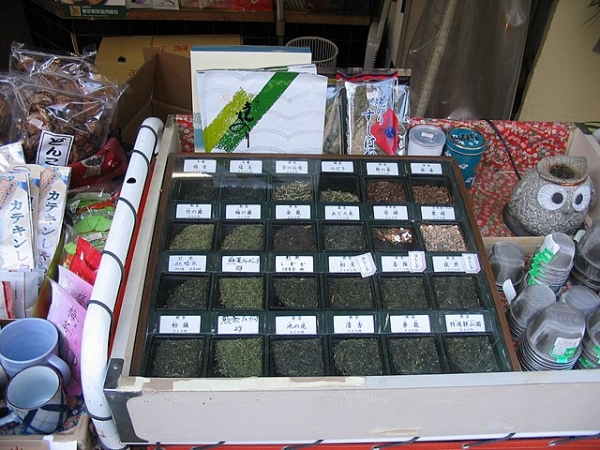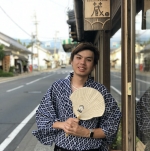What’cha drinking today? Types of teas and production areas

Sometimes you think you’re a matcha (抹茶) connoisseur and know everything there is to know about matcha, and then you walk into a Japanese tea specialty shop, open the menu and go: wait, what are all these teas I’ve never heard of?
Well, I think we’ve all been there when it comes to the dizzying amount of terms there are for Japanese green tea, and in this article, we’ll help to list down as many of the common terms as we can, plus some great tea-growing areas to look out for. This is the second part of our two-part dive into tea this month. You can check out the previous article to learn more about green tea’s history and health benefits. Now, on into the unknown.
Types of green tea

Here’s a helpful chart on the production process of three of the most common teas. (Image credit: Ministry of Agriculture, Forestry and Fisheries)
Let’s get this out of the way first. While there are many different names for green tea in Japan, they are often based on the way they are produced or the areas that they come from. In fact, almost all of these teas originate from the same camellia sinensis plant, but they become differentiated via their cultivars (specially bred plants) and preparation methods, which then produce variations in tastes of acidity, bitterness, colour, and so on.
Let’s take a look at the types of teas based on the ways they are produced.
- Ryokucha (緑茶 green tea) or Ocha (お茶 tea): The generic name for green tea.
- Sencha (煎茶 simmered tea): The most commonly drunk form of green tea. Fresh tea leaves are steamed, rolled, shaped into needle-like objects and then dried. It is typically seen as middle-grade and the tea is usually green tinged with yellow.
- Tama Ryokucha (玉緑茶 round tea): Also called guricha (ぐり茶 curly tea), it is produced in the same way as sencha, except that the tea leaves are not shaped, thus giving it a round shape when it is dried naturally.
- Matcha (抹茶 powdered tea): The type of tea typically used in tea ceremonies, and typically in a powdered form. It uses young tea leaves shaded from direct sunlight, steams them, and then dries them without rolling to get tencha (碾茶) tea leaves. These tencha tea leaves are then ground in a stone mill to get matcha powder.
- Koicha (濃茶 thick tea): sometimes called “dark matcha”, it is the thickened form of matcha and is most commonly drunk in modern tea ceremonies. The tea is a thick, dark green mixture.
- Gyokuro (玉露 jade dew): Made from the same tencha tea leaves as matcha, except that it is kept in the shade for the last 20–30 days before harvesting. It is typically seen as the highest-grade tea, with a seaweed-like scent, rich flavour, and a yellowish-green colour like jade.
- Kabusecha (かぶせ茶 covered tea): Made in the same way as gyokuro tea, except that it is covered for only a week before harvesting. It is seen as an intermediary between gyokuro and sencha in terms of quality.
- Fukamushi Sencha (深蒸し煎茶 deeply-steamed simmered tea): Made similarly to sencha, but steamed twice as long. This removes the “grassy” taste and results in a stronger taste and a dark green colour.
- Shincha (新茶 new tea): The first harvest of sencha, also called Ichibancha (一番茶 first picked tea). It has a strong scent of fresh leaves, low catechin and caffeine content.
- Bancha (番茶 numbered tea): The subsequent harvests of sencha. It is typically seen as the lowest grade, and is also the cheapest.
- Konacha (粉茶 powder tea): Made from the leftover tea leaves and dust from sencha and gyokuro production, it is what you often find served at sushi restaurants.
- Genmaicha (玄米茶 brown rice tea): Made from a half/half blend of roasted brown rice and bancha tea leaves. The tea has a mild yellow colour, a roasted aroma and lower caffeine content than sencha. Restaurants often serve this type of tea in place of water.
- Hōjicha (ほうじ茶 roasted tea): Made by roasting sencha or bancha at 200ºC, removing caffeine and resulting in a less bitter taste. It usually has a clear brown colour with a light taste.
Green tea production areas in Japan

Production Volume in 2020 (Tons).
(Data from: Ministry of Agriculture, Forestry and Fisheries)
One of the largest Green Tea production area is Shizuoka Prefecture (静岡県 Shizuoka-ken) and Kagoshima Prefecture (鹿児島県 Kagoshima-ken). They make up almost 80% of the combined production volume of teas in Japan, it is interesting to note that most of the other top-rankers are also from Kyushu (九州 Kyūshū). The other interesting group of prefectures are Kyoto (京都県 Kyōto-ken) and Mie (三重県 Mie-ken). These are the original areas where Myoan Eisai (明菴栄西), the forefather of Japanese green tea, planted tea seeds when he first brought them back from China in the 1200s.

A breath-taking view. (Image credit: Andreas Dress / Unsplash)
Shizuoka Prefecture is Japan’s largest tea producer and is often synonymous with green tea in Japan. It specialises in producing sencha and fukamushi sencha, and its position near Mount Fuji gives it soil that is rich in volcanic nutrients and natural slopes that serve as irrigation systems. It is said that Tokugawa Ieyasu, the founder of the Tokugawa shogunate, was very fond of the tea grown there that was known as Honzancha (本山茶). Kawane (川根), located on the mountainside on the upper stream of the Oi River, is one of the most famous tea plantations in Shizuoka that is famous for producing fukamushi sencha.

Rolling rows of tea at the Nansatsu Plateau (南薩台地 Nansatsu-daichi) in Kagoshima. (Image credit: Ray_go / CC BY-SA 3.0)
Kagoshima is Japan’s second-largest tea producer at 37.8%, and offers a blend of different teas. As the name recognition of Kagoshima tea was not as high, Kagoshima engaged in offering different types of tea when entering full-scale tea production in 1975. They were once known for mass-producing cheaper green teas for bulk buyers, but have moved towards producing higher qualities of green tea at the same low price in recent years. Its southern warmer climate makes it ideal for tea growing, and allows them to harvest the earliest sencha in Japan. Shibushi (志布志) is one of the leading tea plantations in Kagoshima, and specialises in tama ryokucha, shincha, and organic gyokuro.
Mie is Japan’s largest producer of Kabusecha, and third-largest tea producer overall. During the start of the Meiji Restoration, Mie actually produced the largest majority of tea that was exported, most of which was black tea rather than green tea. Since Mie green tea was not well-known, it was often used to blend with Shizuoka or Uji teas. In recent years, they have branded their tea as Isecha (伊勢茶), and Yokkaichi (四日市) is one of the popular tea plantations that specialises in kabusecha.
Of special mention is Kyoto. While Kyoto is Japan’s fifth-largest producer of green tea, it is famous for producing higher quality teas such as matcha. It is also the home of Uji (宇治) tea, which is known as honcha. You can learn more about the history of Uji tea in our previous article. Suffice to say that, Uji has had a long and storied history with tea, and even today maintains its reputation for top quality matcha.
Green tea and tea-growing areas

(Image credit: Sebastian Sammer / Unsplash)
Hopefully, with this rather comprehensive look at the different types of green tea as well as where they are grown, you now have a better idea of the world of green tea. Maybe the next time you head to a tea specialty shop in Japan, you’ll recognize more of the names on the menu, and even make a more informed choice of tea based on your own personal preferences. If you have the time during your trip, do also try to visit some of the tea-growing areas. Tea tourism is a growing field (pun totally intended) and it’s really interesting to take a look at the plateaus or slopes where these tea leaves are grown, and even try some tea made from freshly plucked tea leaves too.
This article is written in collaboration with the Ministry of Agriculture, Forestry and Fisheries (MAFF) of Japan.
For more information on Japanese food and ingredients, please visit https://tasteofjapan.maff.go.jp/en/.
Header image credit: monika.monika / CC BY 2.0





